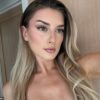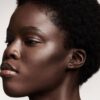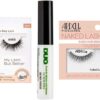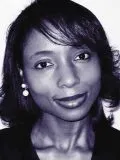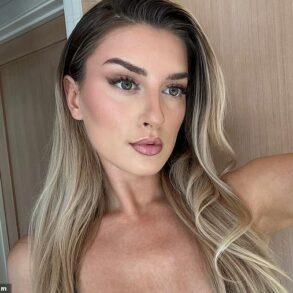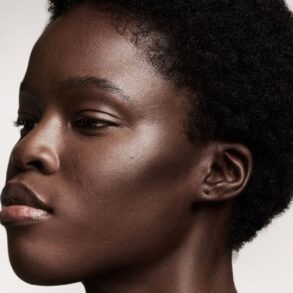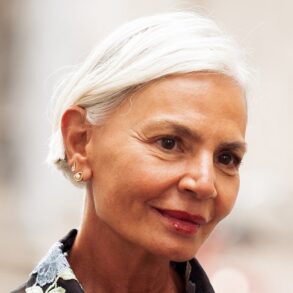“The witch is a fierce rejection of society’s expectations.”
That’s one way author Bri Luna describes the archetype of the witch in her first book, “Blood Sex Magic: Everyday Magic for the Modern Mystic.” Known for her groundbreaking 10-year-old website The Hoodwitch — featuring astrology, tarot, rituals, crystals and mystics — Luna gets personal in the expansive new book that does not fit neatly into one genre. It is part memoir and part grimoire, with cultural criticism, personal observations and historical offerings to boot. The striking visuals enhance Luna’s words, be they spells about relationships or stories about her upbringing.
With roughly half a million followers on Instagram and write-ups in Vogue, the New York Times and Playboy, Luna is one of the nation’s most influential witches. Being of Black and Mexican heritage, her prominence especially stands out since witchcraft was long portrayed in popular culture in the United States through a White lens.
In “Blood Sex Magic,” Luna disrupts such messaging, sharing how the brujeria of her maternal grandmother of Mexican Indigenous heritage and the hoodoo of her paternal grandmother of Black Southern heritage shaped her into the witch she is today. Luna’s native Los Angeles, including the magic of Venice Beach and the nail shops in the city’s hoods, influenced her too. Now based in Seattle, Luna has earned a following for her intricate and decorative manicures, which she considers to be a form of glamor magic. Growing up, she realized that the Vietnamese-owned shops that her mother and grandmother patronized had altars in them, a reflection of the nail techs’ spirituality steeped in Buddhism and magic.
“They have them in their business for good luck, for money, and to give gratitude to their ancestors,” Luna said a nail tech told her. “She was talking about how if you don’t pay reverence to them, you can get ghosts, and it was really … so fascinating to learn.”
Through spells and vignettes, Luna reveals in her book that she has also learned from personal challenges — toxic relationships, overindulgences and health issues. To that end, “Blood Sex Magic” includes passages about reproductive health and fertility goddesses. The 19th spoke with Luna about that as well as the Hoodwitch, Hollywood and Halloween.
This interview has been edited for length and clarity.
Nadra Nittle: So, first of all, this book is gorgeous. Awash in red, gold, lavender and blue, the visuals are just as important as the personal narrative and spells in the book. There is Catholic imagery — particularly of la Virgen de Guadalupe — along with family snapshots and photos and illustrations of Santa Muerte, serpents, scorpions and blood. There are clouds, roses, candles, honey — and pictures of your highly elaborate nail art. Collectively, the images make the book feel magical. How did you select the art featured in the book?
Bri Luna: I’m a very visual-focused person, especially with my website, and I’ve always just been very, very big into contemporary art. I’ve worked in film and television doing special makeup effects. Basically, this book is a visual representation of my brain. I wanted to have something that was very impactful, rich and deep colors very much playing on symbolism. The archetypes when people see symbols and imagery — it really speaks to them, and I think it really helps to create the narrative around the stories that I’m telling.
You mentioned your website, The Hoodwitch, which celebrates its decade anniversary in November. Can you discuss how the book, in some ways, reflects the website’s evolution over the past 10 years?
When I started The Hoodwitch, I realized very quickly that I was [one of the only] witches of color on Instagram and social media. It was a very White, very Eurocentric space. At that time, we were seeing a lot of black and silver, very “American Horror Story,” gothic aesthetic. It was like, “Oh, join my moon circle,” and I didn’t really fit into that space. I wanted to create something that felt authentic to my culture, my upbringing, my background and just my vision of how I wanted to share magic and spirituality as I’ve known it in my life.
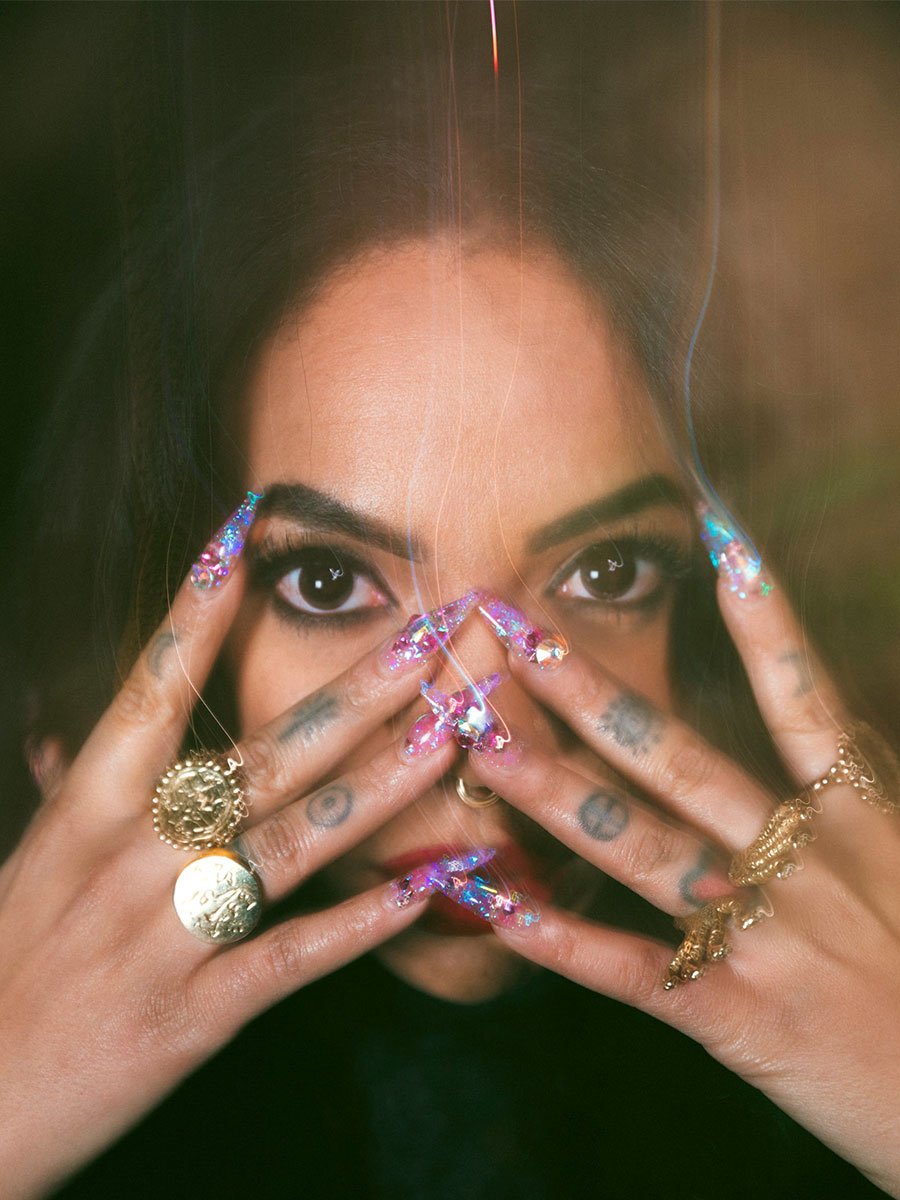
Over these past 10 years, do you think progress has been made in terms of representation of witches of color in TV and film, social media and even the news media, since articles about witches in the recent past largely focused on White witches?
Absolutely, and I don’t shy away from saying what The Hoodwitch built and the platform that I have created in having private communities, doing workshops, teaching and being visible. I do think that I really stood at the forefront of this modern witch renaissance that has opened up the doors for many witches of color to come out and to show more representation. It was obviously within our communities. We had botanicas, different stores [for spiritual products], but it was kept hush hush. It wasn’t put onto social media, so I do think that my website was very innovative, and it still is, in really helping people to connect back to their spirituality, connect back to their ancestral lineage, connect back to decolonized spiritual practices outside of Christianity and Catholicism.
In “Blood Sex Magic,” you describe what a witch actually is. Can you explain it to our readers because this is a topic that seems to confuse people? Whenever I’ve written about witches, I’ll inevitably encounter comments from readers who believe witches are fictional instead of, say, practitioners of paganism or devotees of the divine feminine.
In my book, I say the witch is whoever the fuck she wants to be. When we think about witchcraft, when we think about magic, when we think about brujas, there is no one size fits all because throughout many different cultures, the witch has existed through every continent. From the beginning of time, we always had wise women, women who knew about plants and medicine, had a connection to earth, had a connection to nature, to the planets, the healing properties. You cannot pick one continent that does not have sorcery or magic or the people who are entrusted to keep those secrets. So, I don’t think that there is any one definition of who and what the witch is, because the witch is the only archetype who defines him or herself. When you call yourself a witch, when you’re practicing magic, then, you’re a witch. That’s a title that’s not necessarily given to you by anyone. It’s a very self-initiating label.
In your book, you pay tribute to your grandmothers. Why was it important to highlight the folk and magical traditions they practiced? I thought it was really interesting that since your Black grandmother was such a devout churchgoer, you didn’t really think of the customs she practiced as magical or part of the hoodoo tradition until you got older.
I didn’t really see either of my grandmothers as being “a witch,” because when you watch TV as a kid, you think witches are ugly and mean. But I just never saw them as that because they presented themselves differently. I do think that it was important for me to pay respect to them, because they really are and they were guiding forces in my life. Without them, I wouldn’t be here.
Your book includes multiple spells, including a spell for women who have lost or ended pregnancies. Why did you include a spell related to miscarriage and abortion?
Obviously, this is going to be a very touchy subject, and I think that it shouldn’t be. I think that it should be destigmatized and that is the beauty of the witch’s work and job. With reproductive rights being taken away state by state, it’s heartbreaking because I have, unfortunately, been put in a position where I’ve had to terminate a pregnancy, and it’s isolating and lonely and sad when you don’t feel supported and when you’re feeling scared or confused. So, I think that it’s important to destigmatize that because it’s not your shame to carry and it should not be shameful. Especially with miscarriage, women feel like there’s something wrong with them. There’s just so much guilt and grief, and I really think that it was important for me to share in my book means of healing for people who don’t have the resources or the friends or family to help them through these really uncomfortable and difficult times.
On a lighter note, the book also devotes many pages to glamor magic. You are known for your elaborate and beautiful manicures. You’ve made it onto the pages of Vogue and scored a deal with Smashbox to create a product line. In “Blood Sex Magic,” you say your glamor influences include everyone from Zsa Zsa Gabor and Little Richard to Grace Jones and Tim Curry (as Dr. Frank-N-Furter in “The Rocky Horror Picture Show”).
It’s true. I love them so much. They’re so exciting to me. They embody the witch because they came into this planet as disruptors with their glamor, with their beauty, with their style. I watched a documentary on Little Richard, and I wept like a baby. If only he could just be alive now, he could just be himself, be a Black flamboyant queer-identifying person who wore makeup and was fabulous, and people would love him now. They still loved him then, but I think he would be so much more embraced now versus having to deal with the abuse, racism and homophobia that he did [during his lifetime].
Another person you cite in your discussion of glamor magic is the late track star Florence Griffith Joyner. You believe that the intention with which she chose her manicures and other aspects of her aesthetic helped her win Olympic gold. Can you elaborate on that?
She was this powerful force of nature. She was this beautiful Black woman, and she came out with these nails and she designed them and she painted them and she put an intention into each of them where she’s like, “I’m gonna fucking win.” That is some intentional, cool shit. I think that so many people have tried to minimize me or reduce me to being like, “Oh, she just cares about her aesthetic.” And I’m like, “Well, no shit.” I’m an artist. I’m a witch. I love creativity. I love expression. So why would I not want to make things I’m investing my time into look beautiful?
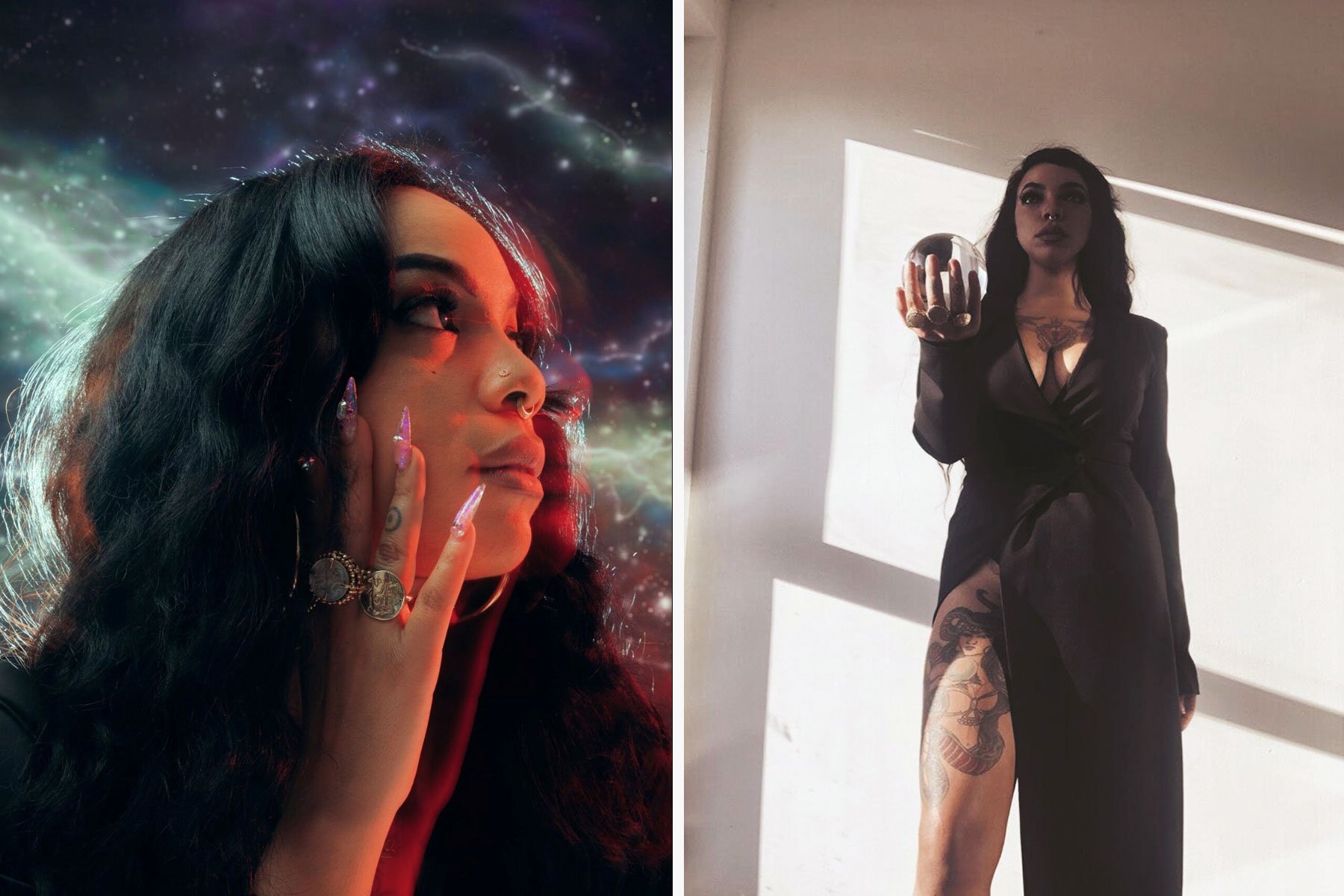
At the beginning of this interview, you briefly mentioned “American Horror Story.” In “Blood Sex Magic,” you discuss your concerns with its third season, “Coven,” because it portrayed the magic of Marie Laveau, known as the Voodoo Queen of New Orleans, as evil.
Watching “American Horror Story: Coven” really pissed me off because, how do you take this beautiful woman, this figure, Marie Laveau, who helped so many people by healing and offering her services and was so kind and so loving to her community and then completely demonize her? Turn her into this evil person who was sacrificing babies. On top of that, they took Papa Legba, who is so culturally significant in Vodou, and turned him into this evil person who eats babies. Where does this come from? It’s just so warped. It’s just deeply inherent racism [rooted in] Hollywood fearing things that they don’t understand and wanting to make Black/African spirituality and magic dark and demonic, but then European, Wiccan and Celtic heritage is turned into, like, “Lord of the Rings.”
Since I normally write about education for The 19th, I’d like to close with an education question. Increasingly, schools are making headlines for no longer observing Halloween. Some have replaced Halloween with “harvest festivals,” and others have outright banned Halloween costumes during the school day. What do you think about the backlash to Halloween?
Christians have turned every pagan holiday into some version of Christianity. So you have Christmas that used to be a pagan holiday. You have Easter that used to be a pagan holiday. So now we get to Samhain, Halloween, Día de los Muertos — you get all of these death celebrations around the world — and people fucking hate it. Halloween is the only holiday that has remained secular, and I love this for Halloween. This is why it’s my favorite holiday. So I think it’s stupid, I think it’s silly, to try to take Halloween away from children. It is fun. You can call it a Harvest Festival, but Halloween is always going to be pagan. It’s always going to be a time to celebrate death, and it’s always going to be fun and spooky. They will never take that away from Halloween, Samhain or Día de los Muertos.
In addition to serving as The 19th’s education reporter, Nadra Nittle is author of the forthcoming book, bell hooks’ Spiritual Vision: Buddhist, Christian, and Feminist.
This post was originally published on this site be sure to check out more of their content.

